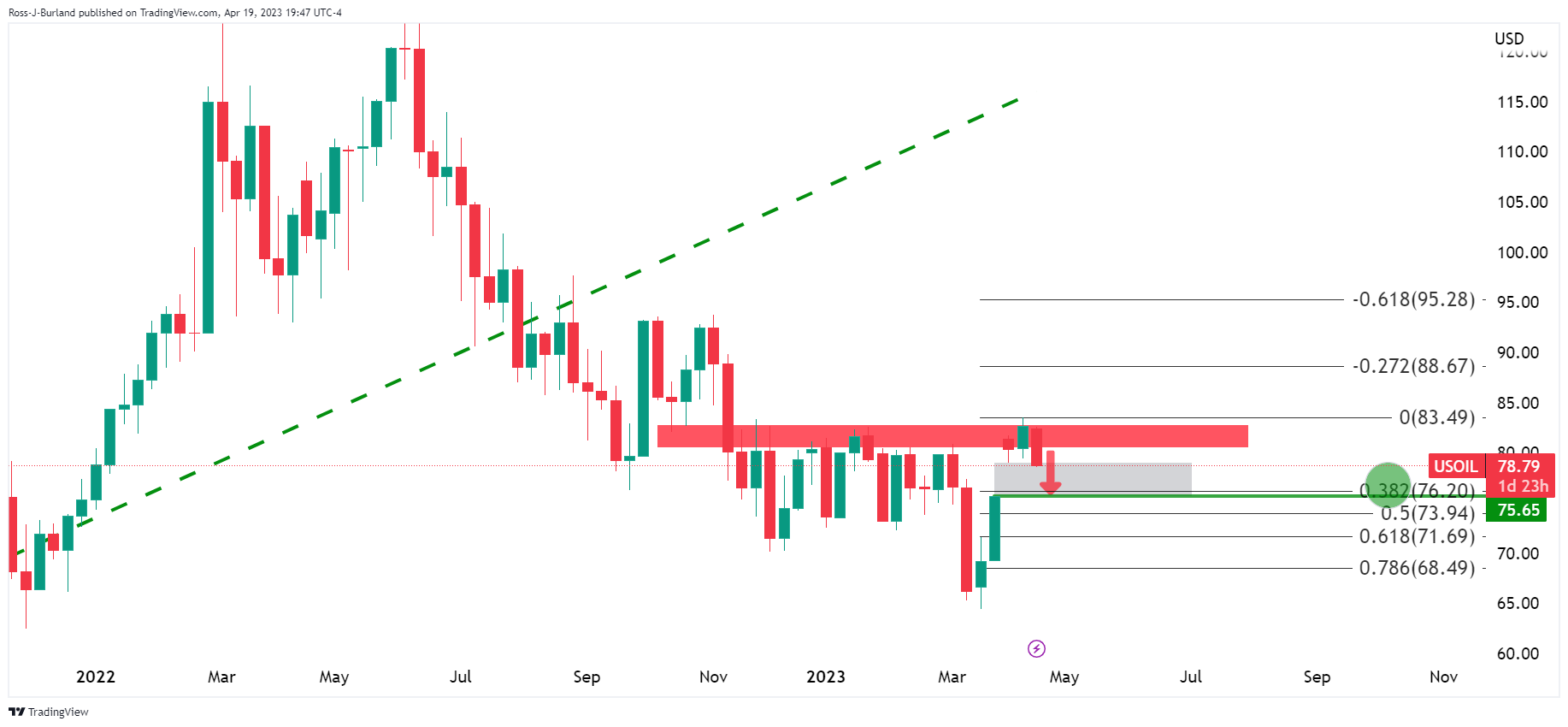- WTI bears move in and eye a close of the gap at $75.65
Market news
WTI bears move in and eye a close of the gap at $75.65
- WTI bears are in the market despite OPEC production cut.
- US data unsettled markets, US Dollar rises.
West Texas Intermediate, WTI, crude oil was down some 0.2% at the time of writing but closed at the lowest point this month on Wednesday. WTI fell from a high of $81.15 and met a low of $78.58, slightly lower than the current spot price of $78.83.
The US Dollar was a driver mid-week as concerns that growth is slowing amid rising interest rates come back to the fore amid a hawkish Federal Reserve sentiment. An economic survey from the Federal Reserve showed the US economy stalled in recent weeks amid slower hiring and tighter credit. Meanwhile, the Federal Reserve is anticipated to continue pushing interest rates higher when its policy committee meets next month, with another 25-basis point hike seen as likely. WTI was sharply lower on fears of weaker demand increased.
Analysts at ANZ Bank referring to the US data explained that the data ´´unsettled markets, magnifying recent concerns that monetary tightening has weakened demand for oil.´´
Meanwhile, the analysts noted that the market shrugged off a relatively bullish EIA inventory report. ´´US commercial inventories of crude oil fell 4,581kbbl last week. However, a rise in gasoline inventories (+1,299kbbl) played to the concerns of weaker consumer demand. This could all dissipate as the impact of OPEC’s new production agreement starts to bite. The group’s cut of 1.1mb/d will not commence until 1 May. In the meantime, the market is likely to remain fixated on the demand outlook.´´
Oil was also lower despite OPEC+'s decision earlier this month to cut production to counter rising global inventories.
´´The significant short squeeze orchestrated by the announcement of OPEC+ production cuts appears to be running out of steam, leaving price action vulnerable to an oversupplied physical market in the very near-term,´´ analysts at TD Securities explained. ´´Still, time spreads continue to suggest that crude markets should tighten in coming months, suggesting physical markets will soon support price action.´´
USD/JPY technical analysis

The bears are in and eye a 38.2%fibonacci correction towards a close of the gap at $75.65bbls.